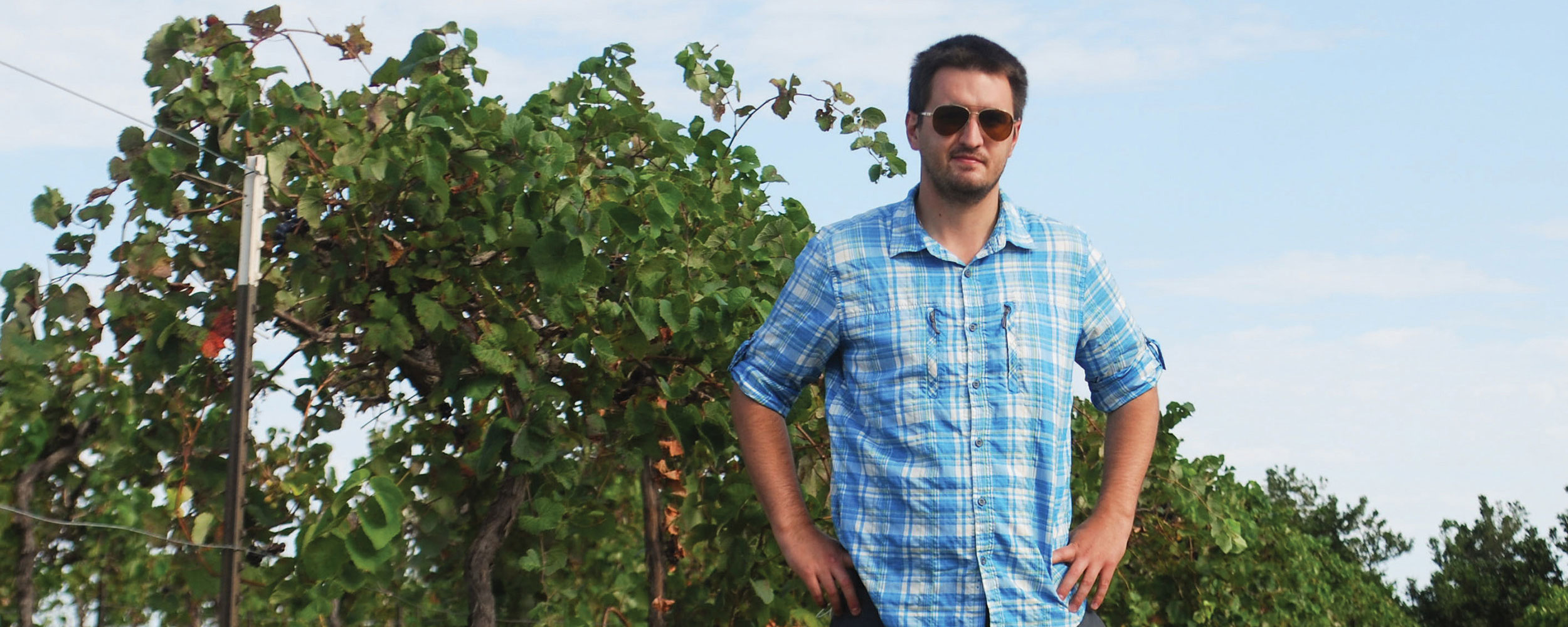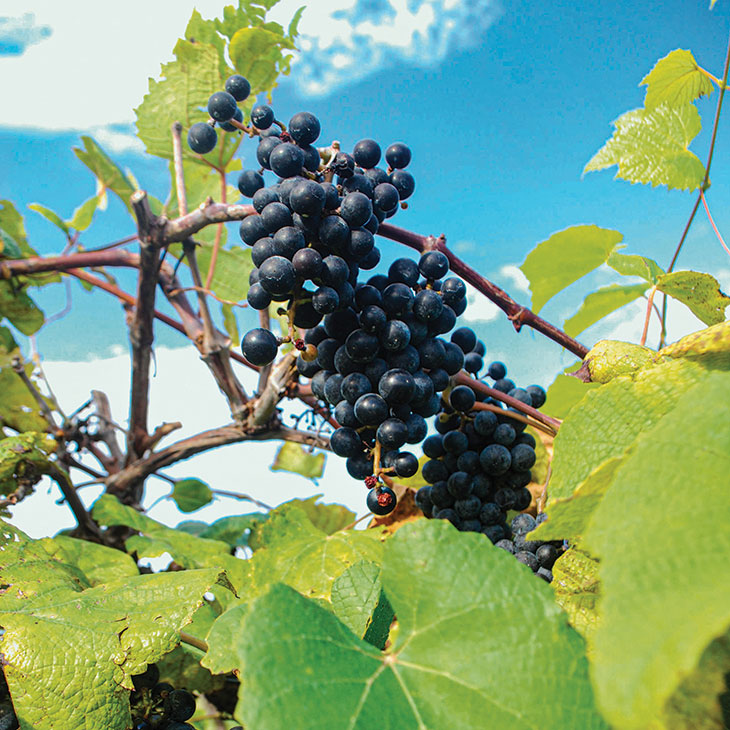
From Vine To Wine
Friday, December 17, 2021
Media Contact: Samantha Siler | Communications and Marketing Manager | 405-744-2977 | samantha.siler@okstate.edu
Oklahoma residents often wind down their days with a glass of wine. However, few know about the 70 local wineries in their home state. When thinking about wineries, most people picture states like California or Oregon.
Knowing the lack of awareness about the local wine industry, the Oklahoma Grape Industry Council members sought a qualified viticulturist, which is someone who grows grapes, to lead the grape and wine industry members.
OGIC members were searching for a viticulturist who would be able to connect with winemakers and help expand the industry throughout the state.
Oklahoma State University Extension hired Andrej Svyantek, assistant grape and wine specialist, who completed his undergraduate degree and earned his master’s degree at Auburn University in Alabama.
For his doctoral degree, Svyantek studied grapevine breeding at North Dakota State University.
“During my master’s degree, I studied Pierce’s disease resistance at Auburn, and that is where I fostered my passion,” Svyantek said.
When studying Pierce’s disease, a deadly bacteria in grapes, Svyantek connected with people in the industry, he said.
“It was exciting and opened doors for me with our grape growers,” Svyantek said.
Svyantek is excited for the opportunity to impact the industry as most Oklahoma growers are on a small scale, he said. Svyantek took his OSU Extension position at in June and is focused on working with the producers, he added.
“I work with our farms that grow grapes and our wineries that make ethanol from those grapes to try to improve the quality and quantity of production in the state,” Svyantek said.
Svyantek is in the office as much as he can be, but he mainly travels all around Oklahoma as a statewide specialist, he said.
“My job is mainly communicating with growers and visiting the vineyards,” Svyantek said. “Connecting and communicating with the growers to help them make a profit is the most important thing I can do.”
In June 2021, the council members provided input about hiring Svyantek and helped get the grant approved, said Cynthia Duncan, OGIC president.
To help fund his position, the council members applied and received a grant from the viticulture and enology fund through the horticulture department, Duncan said.
“We were able to get a grant specifically to provide help to our growers,” Duncan said.

Part of Duncan’s role is to keep in touch with the industry leaders and communicate programs available to help assist growers, she said.
She is a frequent contact for Svyantek so they can discuss vineyard conditions and plan trips to wineries, Duncan said.
“Dr. Svyantek has collaborated with a lot of people in the industry and all across the United States,” Duncan said.
Grapes are highly susceptible to disease and require extensive care and attention. In Oklahoma, the vineyards are not accustomed to harsh conditions so last winter caused a lot of damage to them, Duncan said.
“Dr. Svyantek instructed us on what to do since we had a lot of issues because of one winter,” Duncan said.
Coming from North Dakota, Svyantek adjusted to Oklahoma’s climate and got right to work, she said.
“He’s already making recommendations for new varieties that he believes will work well here,” Duncan said.
More recently, the OGIC members have noticed a younger audience is interested in the wineries and are beginning to enter the industry, Duncan said. The council members believe Svyantek can attract this age group, she added.
“I think Dr. Svyantek is going to bring our industry more attention,” Duncan said. “His background in working with wine is going to really benefit our winemakers.”
Svyantek has mentioned introducing new styles of wine that could also be taught through wine-making classes, Duncan said.
Making wine in Oklahoma can be challenging for local growers as temperatures can be unpredictable, Duncan said.
“We’ve got to realize that we cannot grow the same varieties as California wineries,” Duncan said. “The vines can easily die, which means we need to grow those cold hardy varieties.”
Until 2021, OSU did not have an OSU Extension grape and wine specialist position at the university.
“Growers were pretty demanding to get somebody in this position,” Svyantek said.
A grape and wine class is available in the spring to anyone who is interested in the grape management course, which meets one Thursday a month, Svyantek said.
The class has been taught at the Cimarron Valley Research Station and Svyantek plans to teach the class in the spring of 2022, he added.
“The class is geared toward people who are not yet growers to give them a basic understanding of grapevine production concepts and put them on the right path to ways they can grow,” Svyantek said.
Varieties of grapevines are being studied for disease resistance at the research station, Svyantek said.
“The research is a nonstop process, and the vines are green from late March until early October,” Svyantek said. “The harvest season is July through September.”
The grape and wine industry started gaining more attention by the year 2000, and industry leaders want to continue the expansion, said Becky Carroll, Extension fruit and pecan specialist. Svyantek will travel across the state and answer any questions or concerns by growers, Carroll said.
“It’s important to keep building relationships with the growers and winemakers,” Carroll said.
The people involved in Oklahoma wine production are excited to see Svyantek’s contribution to the industry by working closely with growers, Carroll said.
Research focused on disease resistance and preventatives provide an opportunity for undergraduate and graduate students, Carroll said.
“The industry is excited to see his contributions in grape and wine production throughout Oklahoma,” Carroll said. “And I can’t wait to see how all of this comes together.”
Story By: Jenna Henson | Cowboy Journal
